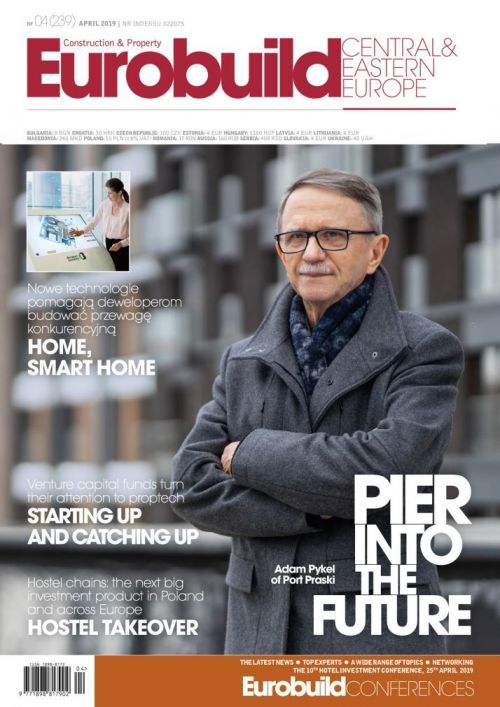Rethinking the office
Office & mixed-use development
If the office where you work has not changed at all for many years, this probably means it does not meet the needs of your company today. A quick look might show you a number of its bizarre quirks such as employees who prefer to sit with headphones on, who would otherwise be disturbed by the noise or people wandering around the corridors with mobile phone in hand, as they have nowhere private for them to talk. Chairs might also occasionally be moved into the corridor when there is nowhere suitable to hold a meeting.
What is it you need?
Clearly such an office could do with a change, but defining what is needed requires specialised tools. Before making any major changes to an office, most international corporations will call in a workplace strategy consultant. Such a consultant might typically take from six to twelve weeks doing their research, which will include employee surveys, interviews with managers, workshops and office observations. Sometimes motion sensors might be used to determine how effectively the space is being used. Such research will allow a new plan to be drawn up which will better meet the needs and objectives of a company. “Managers are growing more aware and want to base their decisions on data that is as reliable as possible,” says Aleksander Szybilski, an associate director at Cushman & Wakefield.
Before workplace strategy took root in our market, interior design firms would often use the traditional tool of the interview. “When preparing a design, an interior architect would usually ask about the flow of information a company, its organisational structure, which teams worked with each other, what the general needs were and what changes the organisation was preparing for. It turns out that the workplace strategy approach provides much more data and it is a good place for me to start designing the layout of an office,” says Danuta Barańska, the creative director at Tétris.

“The workplace strategy approach provides much more data and it is a good place for me to start designing the layout of an office,” says Danuta Barańska, the creative director at Tétris
Do not be afraid of talking
One of the problems with interviewing company managers is that their answers will always be somewhat subjective. “Just relying on managers’ opinions can be very risky. It usually results in leasing more space, and creating a less functional layout,” says Aleksander Szybilski. Directors frequently do not want to lose their own office and fear employees will become unhappy, so they assume in advance that desk sharing is not going to work in their organisation. They might be reluctant to spend money on modernisation, so they will say that the employees like the way the office looks. “Only when we do the research and we can we see for instance that 90 pct of the employees would not put a picture of their office up on social media or bring their loved ones round, can we confront the managers’ beliefs. When data clashes with opinions we have a more objective picture that allows management to make more informed decisions about any changes,” says Aleksander Szybilski.
Often one of the reasons behind the changes is to improve communication between employees, which often entails giving up on an arrangement based on individual offices. Managers no longer work in separate rooms as they did before, but together with their employees. The changes even include partners, who now have to work in the common areas. “There used to be a similar practice in the banking sector. Company partners were all in one room. There was no need to schedule meetings or book dates in the calendar to discuss matters of importance to a company's operations. Information would be exchanged naturally while people worked in the office,” says Dorota Osiecka, the director of the workplace strategy department at Colliers International.
One example frequently used to illustrtate the advantages of a workplace strategy approach is Norwegian company Telenor, which removed a number of points in its offices where coffee could be made creating a large kitchen instead, where the coffee acted more as a magnet to draw together all the people on the same floor. Telenor attributes its 20 pct increase in sales to this change. Breaking down the hierarchical structure of a company is no different, when the goal is to improve communication between individual departments. The people in sales should talk often with the R&D department, because who knows the needs of the market better than the sales staff? And who, in turn, knows the product best? “However, if a company doesn’t have a culture of socialising and if we believe that every employee chatting in the kitchen over a coffee is someone who isn’t working, it’ll be difficult for people to naturally swap their opinions. But these days they say that the more people talk with each other and exchange information, the better the business,” claims Marta Badura, the associate director of strategic consultancy for the EMEA region at Knight Frank.
Choosing wisely
A heavy burden of responsibility rests on the shoulders of a workplace strategist. On the one hand, they can really help a business; but on the other, their mistakes can be costly. “When the research is done well, it will improve how the space is used, increase work efficiency and reduce costs. But when poorly conducted, it can completely disrupt the operations of a company,” cautions Zbigniew Kostrzewa, the owner of the In Design studio. He gives the example of a company that reduced the number of its workstations after research had shown that only 50 pct of the desks were being used. However, the research had not accounted for periods of peak activity or the specific nature of the work of some of the departments. “It soon turned out that the company didn’t have enough workstations,” he explains.
Today workplace strategy is often a service offered free of charge. Many furniture manufacturers offer it with the purchase of office equipment and it is given away by some of the smaller real estate agencies. But such services do not always meet the highest of standards. “Instead of the requirements to plan a new arrangement, I get figures, such as how many square metres there are of conference space per employee. As an interior architect, I cannot make any decisions based on these numbers. It is not possible to draw up a detailed plan that would improve a company’s operations,” states Zbigniew Kostrzewa. Properly conducted research provides much more detailed information about how a company is structured, about what the individual departments do and how information is communicated. It does not treat the company as a single homogeneous unit. “It is even more absurd when in order to save time and money the research covers only one part of the company, and then the findings are applied to the entire organisation. In such cases, I would recommend ignoring the research altogether and just going with an interview conducted by a specialist such as an interior architect. The findings will be more relevant and more applicable,” says Zbigniew Kostrzewa, who adds that when looking at the market today, he would not like to be in the position of a manager who, having no prior knowledge, has to choose a company to do such research. “A good choice would be one of the larger real estate agencies that have experience of international projects and employ the best specialists on the market, of whom there are relatively few,” he points out.

“Flooring, furniture, adhesives and paints can all be sources of noxious fumes. However, they are rarely checked for their impact on human health during the design of an office,” points out Andrzej Gutowski, the green building certification director of Colliers International
Owning the change
One advantage of workplace strategy over other approaches is that it prepares people for change. “The worst thing to do would be to present people with a pre-defined plan that nobody consulted on – including those that would be most affected by it,” explains Dorota Osiecka. The workplace strategy approach makes use of the placemaking tools used in urban planning and involves those who will use the space in its creation. One advantage of workplace strategy over other approaches is that it prepares people for change. “The worst thing to do would be to present people with a plan that has already been prepared,” explains Dorota Osiecka. The workplace strategy approach makes use of the placemaking tools used inurban planning and involves those who will use the space in its creation. “If you ask someone to put on an ugly t-shirt, he or she will be unhappy; but if you present them with three different options, they will identify much more with their choice, even if it is not the coolest of t-shirts,” says Aleksander Szybilski. What is important is that people have a say in the things they use. This includes both big items such as the furniture and smaller things such as the carpet colour and the wall decorations. The budget is often a limitation, of course. The board may be reluctant to pay for the research or be afraid that it will cause an avalanche of requests. “They shouldn’t be. People usually understand that not all their wishes can be met,” says Dorota Osiecka. What is important is to keep promises and manage people’s expectations. “The biggest dangers are communication problems about the project and raising people’s expectations. If you promise too much and give too little, people will become disappointed, even with an office that looks really cool. You must not forget that the concept for the office can only be presented to all the employees once its key have already been established,” cautions Aleksander Szybilski.
When it comes to communication, making changes to the arrangement of an office is not just a challenge but also a chance to put right past mistakes. Employees often become frustrated when they do not know what the company’s vision, strategy or goals are. Changing an office is an opportunity to restate a company’s vision and sharpen up its image. “Such changes can also be combined with other changes within a company including to its equipment, its management structure and its style of work,” claims Marta Badura.
Checking the results
Once an office has been created an evaluation survey should be conducted to assess the effects of the change. “These are carried out after a few months, once the dust has settled. Employees need to get used to their new conditions,” says Marta Badura. If an office is flexible, it can be improved relatively easily. However no matter what kind of office you have, you can always pick up on small things, such as loud slamming doors and ugly chipped coffee mugs. “Companies that are aware of such problems, such as many pharmaceutical concerns will frequently monitor their work environments and conduct such evaluations every year,” says Aleksander Szybilski.
This awareness of the large drug producers is largely due to their focus on health, which is an element that is often forgotten in office design. “Although in modern buildings, there is more fresh air with more efficient ventilation systems that use better filters, still too few people pay attention to the cleaning products that are used or the finishing materials. Flooring, furniture, adhesives and paints can all be sources of noxious fumes. However, they are rarely checked for their impact on human health during the design of an office,” points out Andrzej Gutowski, the green building certification director at Colliers International.
As for cleaning, this seems at first to be a rather mundane issue. However, whenever dust accumulates, allergies can be triggered and the mildew that grows whenever there are damp conditions can cause illnesses. “You need to check the tops of cabinets, as well as the areas around radiators and windows, places where often no one will ever looks, which are frequently difficult to clean and where dust can settle or mildew can grow. In a number of cleanliness assessments, which are part of LEED certification, a number of offices had surfaces that were hard to reach and not properly scrubbed,” says Andrzej Gutowski, who goes on to say that: “Health issues are generally not at the top of the priority list for those who manage offices; moreover, such issues often require specialist knowledge with close monitoring of the space.” Health issues are nonetheless an important factor for an employer as they also have a direct impact on employee satisfaction and attendance. “It might seem banal but decision makers seem to forget that a happy employee is both a loyal and an effective worker,” says Aleksander Szybilski.





















































